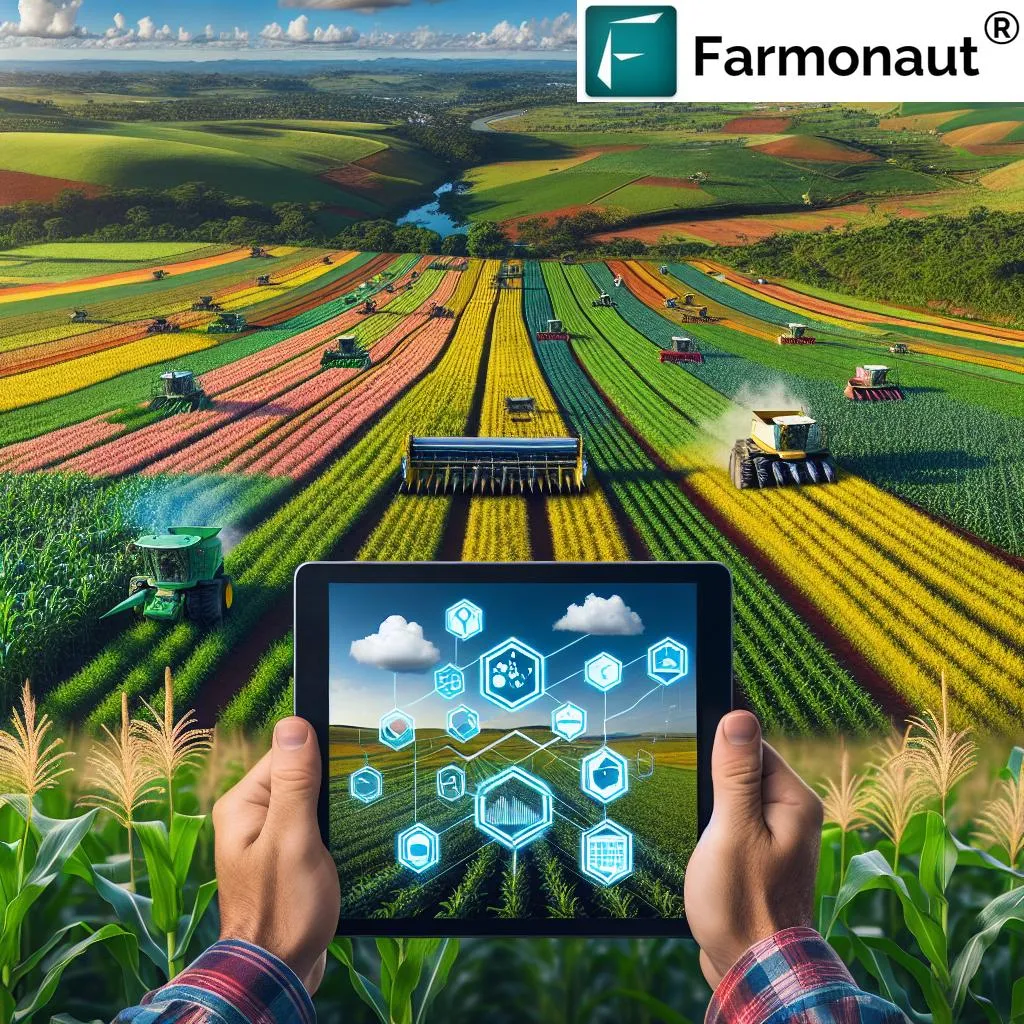In the heart of Brazil’s vast agricultural landscape, a new study is making waves by combining cutting-edge technology with traditional farming practices to improve sugarcane identification. The research, published in *Smart Agricultural Technology*, presents a multimodal framework that integrates spectral, morphological, and textural features from Sentinel-2 imagery with hybrid deep learning techniques. This innovative approach aims to revolutionize precision agriculture, policy formulation, and sustainable land management.
The study, led by Luan Pedro de Souza Silva from the Universidade Tecnológica Federal do Paraná, focuses on the timely identification of sugarcane cultivation. “Timely identification is crucial for optimizing agricultural practices and ensuring sustainable land use,” Silva explains. The research combines NDVI (Normalized Difference Vegetation Index), geometrical descriptors, and GLCM-based (Gray-Level Co-occurrence Matrix) texture metrics to create a comprehensive feature space. This data is then used to train Random Forest (RF) and Support Vector Machine (SVM) classifiers, as well as a hybrid convolutional neural network (CNN+MLP) architecture.
The results are impressive. The RF model achieved a macro F1-score of 0.91, a Kappa coefficient of 0.86, and a macro-AUC of 0.94 across agricultural regions in Brazil. These metrics indicate a high level of accuracy and reliability in identifying sugarcane fields. The study also employed DBSCAN clustering to filter noisy labels and improve the quality of the training dataset, further enhancing the models’ performance.
One of the most significant aspects of this research is its economic impact. A domain-specific confusion cost matrix illustrated the financial implications of misclassification, showing that the RF and CNN+MLP models improved accuracy and financial efficiency by reducing crop identification errors. This is a game-changer for the agriculture sector, where misidentification can lead to significant financial losses.
The study’s findings are not just theoretically significant but also practically applicable. “Our framework provides a scalable foundation for time-series modeling and real-time land-use analytics,” Silva notes. This means that farmers and agricultural policymakers can use this technology to make more informed decisions, leading to better crop management and sustainable land use.
While the analysis was limited to São Paulo and Mato Grosso do Sul, the framework’s consistent and robust performance within these regions suggests that it could be applied more broadly. This research highlights the benefits of combining morphospectral, textural, and deep features for crop classification, paving the way for future developments in the field.
As the agriculture sector continues to evolve, the integration of advanced technologies like deep learning and remote sensing will play a crucial role in shaping its future. This study is a testament to the potential of these technologies to transform precision agriculture and sustainable land management. With further research and development, we can expect to see even more innovative solutions emerging from this exciting field.

